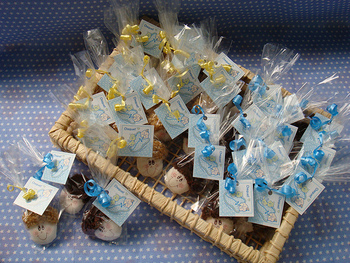Wedding Traditions in South America
South America is a continent with predominantly Christian population. That's why here I won't describe the religious part of the wedding. I'll rather focus on those little details, local traditions that make each wedding even more beautiful.
Let's start our journey in Brazil. There groom must not see the bride wearing her wedding dress before the wedding ceremony. Wedding ring should be engraved with groom's name on bride's ring and vice versa.
Brazilian bride should arrive at the place where the wedding ceremony is held 10 minutes later than it is scheduled. She must not arrive later than the groom.
 Casadinhos
Casadinhos
Groom enters the house or hotel with bride in his hands. He should do it with his right foot first. At the wedding reception people traditionally eat “casadinhos” or “marry well” cookies.
 Caipirinha
Caipirinha
People at Brazilian weddings often drink cocktail "caipirinha". The word caipirinha is a diminutive of "caipira", which means a "person coming from the countryside". The caipirinha is made with cachaça, lime and sugar. The "cachaça" is a beverage made of sugar cane.
All brides want to have great weather at their wedding. That is why all future brides never eat directly from the pot in the weeks before the wedding.
In Brazil it is tradition that the happy couple gives presents to parents. Parents also give presents to the couple.
 Lembrancinhas
Lembrancinhas
At the wedding reception in Brazil the bride often walks from table to table carrying a basket with "lembrancinhas". Each guest gets little object which serves as kind of "souvenir" of the wedding.
Argentinians usually do not have engagement parties. But if they happen, they are more private, family affair. The wedding on the other side is a big party. The presents bride and groom get can be opened in front of guests. But it is fine if the couple decides otherwise.
In Argentina parents or grandparents sometimes give the gold (in the form of an old gold chain or something like that) for the new wedding ring to be made. At the wedding ceremony both the bride and groom wear an engagement ring. It is usually made of silver and is thinner than the wedding ring. During the exchange of rings at the wedding ceremony engagement rings are replaced by wedding rings. Still sometimes the couple keeps engagement rings and wears them together with the wedding ring.
In Chile the wedding rings are also exchanged at the engagement. When the couple is engaged they have a ring on their right hand. After the wedding they'll have it on their left hand.
In Venezuela it is expected from the groom to ask his potential father-in-law for the permission before proposing. People there have two wedding ceremonies – a civil and a church one. The civil one is organized two weeks before the church one. Receptions are organized after each of them.
Do not be surprised if the wedding reception ends without the bride and groom. They just disappear. It suppose to bring good luck to their marriage.
In Peru they put charms (attached with ribbons) between the layers of the wedding cake. Just before the cake is cut and served there is a little tradition organized. Each single woman present at the reception pulls a string. Peruvians believe that the one who pulls out the ribbon with the ring is going to marry within a year.
An old person makes a speech reminding the couple of their duties in the marriage. The elders bless the couple immediately after the wedding ceremony.
People in Colombia have a very nice "candle ceremony". Moments after the wedding ceremony bride and groom each light a candle. Then they use those candles to light a third one together. This candle is the symbol of their unity, new life in which they'll share everything.
Brides married in Colombia have long white wedding dress. During the wedding reception all single persons put one of their shoes under her dress. Groom then chooses one shoe. The owner of this shoe is going to marry next.
Colombian bride often puts a coin in her shoe as a symbol of her wish not to get into situation where she would be without basic stuff in life.
In parts of Colombia the bride and groom are covered with "mantilla" which shows that their marriage is lived under one roof.
At the wedding reception in Ecuador bride and groom give their parents special presents. Such presents are usually objects bride and groom used when they were children.